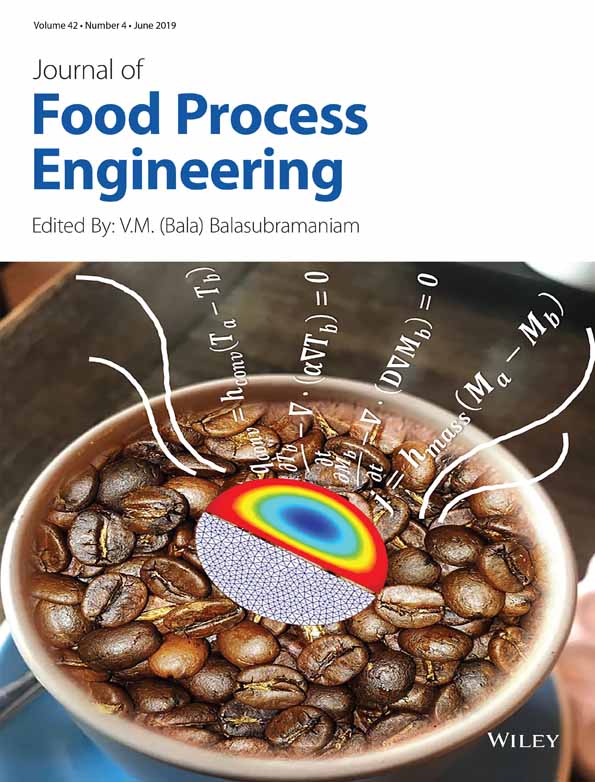In vitro inhibitory effect of tea extracts on starch digestibility
Funding information National Key Research and Development Programme, Grant/Award Number: 2016YFD0400303; Key Technology R and D Program of Jiangsu, Grant/Award Number: BE2013404; 863 Research Program of China, Grant/Award Number: 2013AA100203
Abstract
The effect of brown, oolong, and green teas’ extract on the in vitro inhibition of starch digestibility of cassava, corn, plantain, and yam was explored. The starches exhibited moderately low hydrolysis rate and had moderate resistant starch ratios. Tea metabolites after extraction at different temperatures were quantified and correlated to starch inhibition at 1% introduction using principal component analysis (PCA). Total polyphenols (TP), (−)-epigallocatechin (EGC), (−)-gallocatechin gallate (GCG), (−)-catechin gallate (CG), and (−)-epigallocatechin gallate (EGCG) were positively correlated with starch digestion inhibition especially in the first and second hours of digestion. The (+)-catechin (C) and Total flavonoids (TF) in the teas, however, had a negative correlation with starch inhibition. Green tea extracts were more effective in starch digestion inhibition followed by brown tea and then oolong. TP, EGC, GCG, CG, and EGCG from green tea had the strongest inhibitory effect on starch digestion and that purified extracts of these compounds could be used at a statistically optimized combination to formulate diets with improved hypoglycemic potential.
Practical applications
In order to identify key components in tea responsible for hypoglycemic effect, tea extracts from three different source and their starch inhibitory properties were analyzed using starches from four plant sources. To this end, key components in the tea varieties were identified with potential hypoglycemic effect. Therefore, diets with potential hypoglycemic effect could be formulated using purified extracts from tea such as TP, (−)-epigallocatechin, (−)-gallocatechin gallate, (−)-catechin gallate, and (−)-epigallocatechin gallate under optimized conditions.
CONFLICT OF INTEREST
The authors have no conflict of interest to declare.




